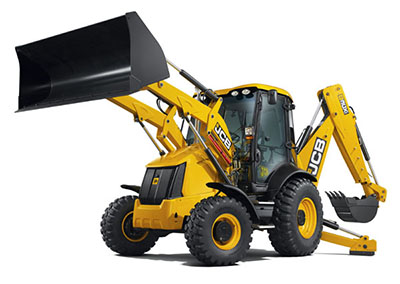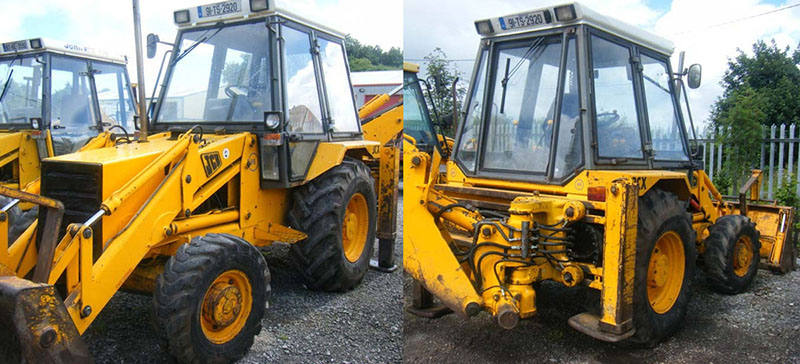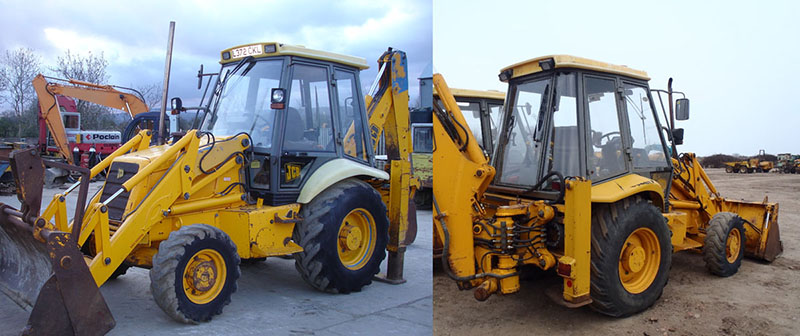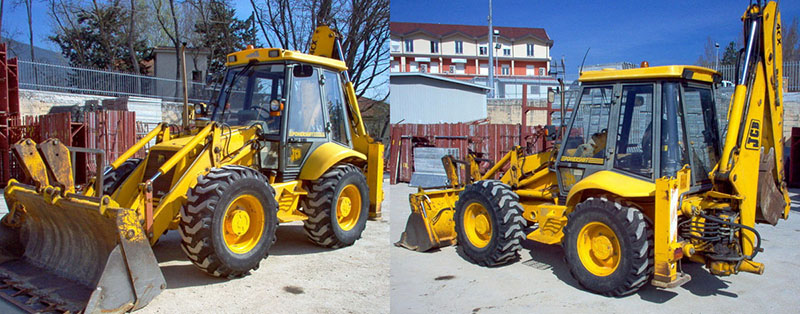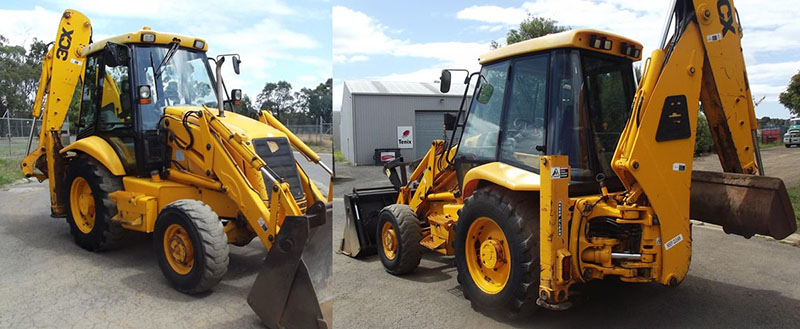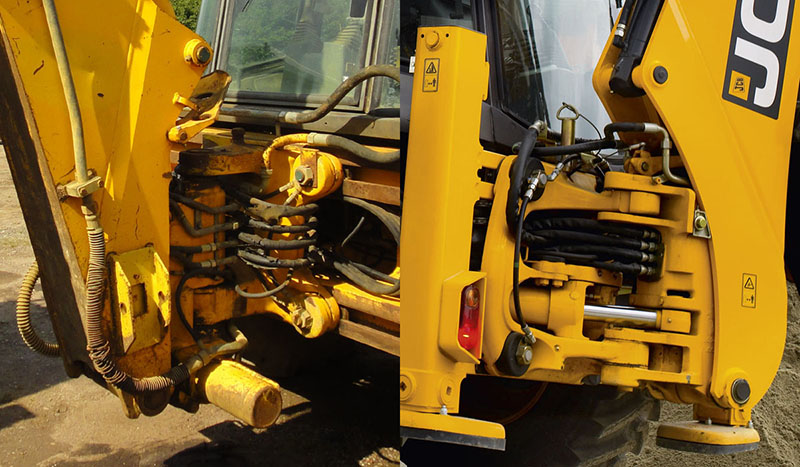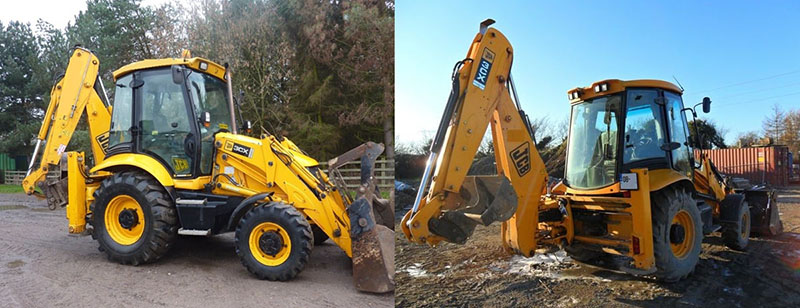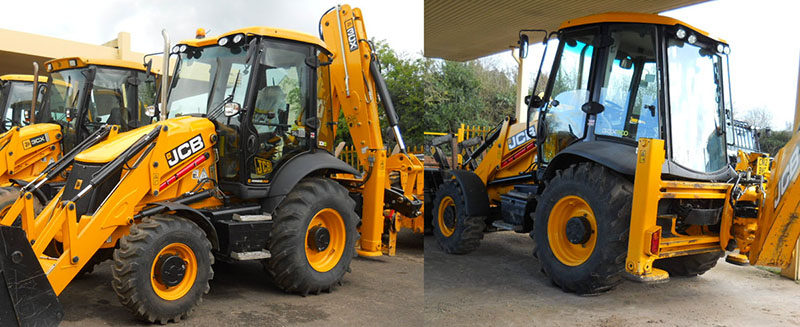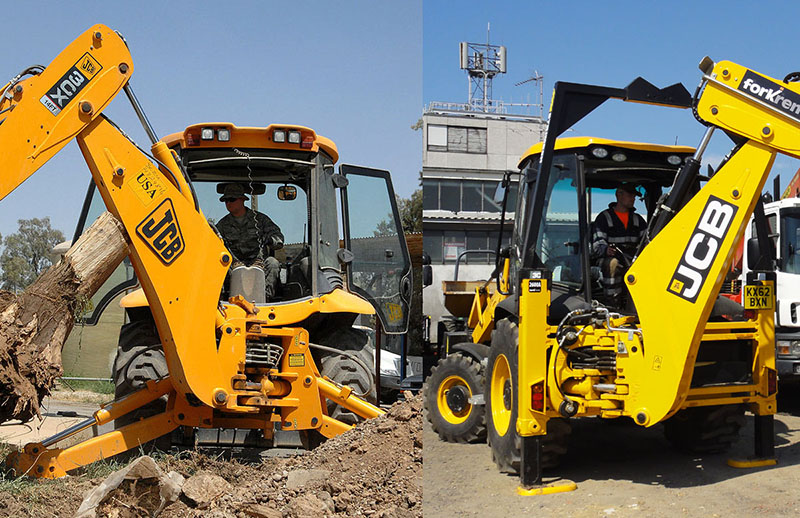|
Eugenio,77
The production of "3CX" index model has continued for more than 35 years, with several generation changes, that demonstrated the gradual evolution of the machine - exterior, control systems, power units, operating equipment...
1980-1991. The basic 3CX (series 200, project 5) was the development of the popular 3C backhoe loaders. In 1981, Sitemaster version was added (project 6, with multi-function jaw bucket and backhoe telescopic dipper). In 1985, with Hammermaster version release (project 3), tha cab was some changed ( "white cab" >> "grey cab"). The earliest 3CX was equipped with Leyland 498 engines, since 1982 - with Perkins 4236, since 1988 (project 7) and for more than fifteen years - with Perkins 1000 series. Over time, in addition to the basic rear-wheel drive (2WD) were added all-wheel drive (4WD) modification with a mechanical connection of the front axle (power take-off from rear axle reductor). Totally 74.000 machines of 1st generation were produced.
1991-1997. The second generation (project 8) was equipped with modified cab ("black cab"), fuel and hydraulic tanks were relocated, chassis substantially modified (include more traditional AWD type with hydromechanical coupling for front wheel drive connection, new forward and reverse clutches instead of the reverse clutch with planetary gear, reduction gear hubs instead hub drive combined with the main gear case, versions with LSD etc.). Family was added with "enhanced" Contractor version, with improved performance hydraulic and more powerful engine. At the same time the production of new family 4CX started, where the conception 4x4x4 (all-wheel-drive and three mode all-wheel-steer) was implemented for the first. Since 1992, in addition to standard SyncroShuttle gerabox, semi-automatic Powershift transmission appeared. In 1995, 3CX Super version was added, with 4WS and equal size wheels (often equipped with a larger radius of digging backhoe). Totally 35.000 3CX of 2nd generation and 45.000 4CX were produced.
- SyncroShuttle - 4-speed transmission with a torque converter, electrohydraulic forward and reverse clutches and synchromesh manual gearbox.
- Powershift - 4-speed transmission with a torque converter; for gear change, forward and reverse switch, 4WD - multi-plate friction clutches used; operator changes gears - by controller on the steering column. - 3CXE - "light" version with a simplified hydraulic system and single-section fixed-displacement hydraulic pump. - 4CN - version with swivel (at 30°) backhoe - Knuckle Boom.
1997-2002. Third generation (project 12) was slightly changed in exterior but received modified hydraulic and cab equipment. A notable difference - new boom turning mechanism instead the previous reductor type for Sideshift models. Over time, optional servo control for working equipment and the hydraulic boom carriage shift were added. At 1999 the engines were upgraded once again, and new naturally aspirated engine of large displacement was added. Totally 45.000 machines of 3rd generation were produced.
2002-2010. The fourth generation (project 21) has received a new cab with increased glass area, 6-speed Powershift transmission, expanded servo Precision Control (since 2008 brand-name EasyControl). Hydraulic pumps were moved to the rear of the transmission case with gear drive from the engine. Since 2005, Torquelock function used in transmission. Since 2006, Advanced Precision Control servo appeared. Since 2009, a new combination meter with digital display and service maintenance control installed.
JCB Ecomax engine (video)
- Auto Powershift - 6-speed transmission with a torque converter; for gear change, forward and reverse switch, 4WD - multi-plate friction clutches used; operator changes gears - by controller on the steering column / automatically (4-6 speed). - TorqueLock - torque converter locking system, which allows to reduce losses during on-road driving and increase the maximum speed beyond 40 km/h. Working equipment control: - ManualControl - by on-floor levers. - EasyControl - excavator control by joysticks on the operator's seat armrest via servo actuators / loader control by on-floor lever. - Advanced EasyControl - excavator and loader control by joysticks.
2010-... The fifth generation behind inherited from predecessor exterior hides a few evolutionary changes: conversion to own JCB engines completed (Common Rail has provided compliance to Tier 4), Powerslide system was updated, improved hydraulic system and controls cause EcoRoad / Ecodig / EcoLoad functions appearance.
- EcoRoad - fuel economy function, using TorqueLock and disabling of the primary hydraulic pump hydraulic system when driving at top gears (Hydraulic Speed Control).
- EcoLoad - a combination of functions "return to dig", transmission cut-off when lifting the loader shovel, Hydraulic Speed Control (HSC) and Smooth Ride System (SRS). - Ecodig - - in the system with fixed-displacement pumps was added a third pump to increase the flow and pressure of the fluid when the engine is running at low rpm. - Smooth Ride System - the cylinder installed in the loader hydraulic line (filled with oil and compressed nitrogen), allows the loader arms to move slightly when driving over bumps to reduce the forces transmitted to the machine. Historically JCB backhoe loaders have two layout variants of backhoe: - Centremount - fixed boom mounting in the center of the machine - Sideshift - boom mounted on the carriage that moves along the guide rails, allowing to shift the axis of digging. The carriage is locking by Hydraclamp servo, and moves mechanically (by bucket repulsion from the ground) or hydraulically (Powerslide - with chain drive at early models or steel cables at later models) How to use sideshift Each variant corresponds to own design of outriggers (stabilizer legs).
Related video: How to understand your JCB cab layout How to operate a hydraulic quickhitch How to use a JCB 6 in 1 bucket How to prepare for roading How to dig a trench How to perform daily checks Automate - putting you in total control Specs of the engines (3CX/4CX).
Generation / model no.
1: 290000-400000 2: 400001-460000 3: 460001-499999, 920001-930000, 900001- (USA) 4: 930000-, 903000- (USA), 960001-985136 (JCB444), 1327001-1349999 (JCB444) 5: 2000000- |
|

